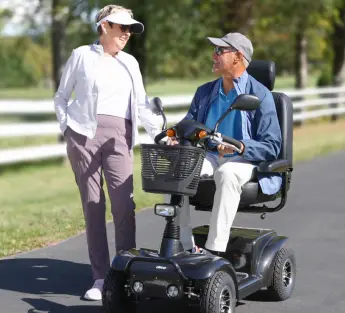Instructions - Lifts (English)
SPINLIFE
PATIENT LIFTERS
PURPOSE: Patient lifts are designed for caregivers to lift and/or transfer an individual. These devices utilize hydraulics or electricity to maximize lifting potential and minimize user effort. Contact your physician and/or therapist for lifting and transferring techniques, or request a manufacturer?s video on lifting techniques.
TYPES: There are many different models and types of patient lifts. They vary in their level of automation, weight capacities, and portability. The basic and most commonly used type is the manual hydraulic lifter. These units are usually on wheels and can be used throughout the facility or home.
USE: Patient lifts, as we stated above, have many uses. Your physician and/or therapist must assist you in a transferring and/or lifting method that best meets your needs. If your unit has a built-in scale, always calibrate the scale before the individual is placed in the sling.
Never exceed the weight capacity of the patient lifter. Never allow incontinence pads or seating cushions to be placed between the patient and sling material; this may cause the patient to slide out of the sling during transfer.
Spread the base to its widest position and lock open, this provides a more stable base of support. Make sure the object being transferred to is stationary, either with wheel locks or attendant secured, to assist in a safe transfer. Place the lifter base directly under the patient. The patient should be facing the lift user. Keep the wheels unlocked while lifting the patient. Always close the hydraulic valve before attaching to the individual. Attach the sling to the individual. Before transferring a patient from a stationary object (wheelchair, commode, bed, etc), slightly raise the patient off the stationary object and check all sling hardware for secure attachment to include swivel bar, straps, S-hooks, and D- or O-rings. If any attachment is not correct, lower the patient and correct the problem, then raise the patient and check again.
Patient lifts are not transport devices and are intended to transfer a patient from one resting position to another. Never push or pull on the lifter boom; pushing or pulling on the lifter boom can cause the patient to tip over. Move patient to designated place, making sure it is secure and will not move or shift when placing individuals. Lower the patient slowly by opening the control valve.
MAINTENANCE: Most hydraulic patient lifters have a hydraulic chamber that must always be intact. If you notice any leakage, contact SpinLife immediately and discontinue use. Your patient lifter must be kept clean and free from dirt, oil and grease.
Most slings can be machine-washed. It is best to place them inside a pillowcase or laundry bag when washing. If you notice a tear or any fraying parts of the sling, immediately discontinue use and notify SpinLife.





 Contact Us
Contact Us
 M-F 9am - 6pm ET
M-F 9am - 6pm ET
 Request parts
Request parts Request Service
Request Service
